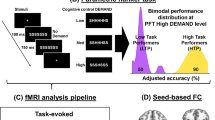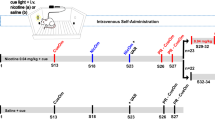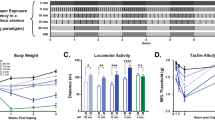Abstract
The ratio of nicotine metabolites (trans-3′-hydroxycotinine (3HC) to cotinine) correlates with nicotine clearance. In previous studies, high nicotine metabolite ratio (NMR) predicted poor outcomes for smoking cessation treatment with nicotine patch. The underlying mechanisms that associate NMR with treatment outcomes have not been fully elucidated. A total of 100 smokers were divided into quartiles based on their baseline plasma NMR. Following overnight abstinence, smokers received saline followed by escalating intravenous doses of nicotine (0.5 and 1.0 mg/70 kg) given 30 min apart. The effects of nicotine on subjective, plasma cortisol, heart rate, and systolic and diastolic blood pressure measures were obtained. Smokers in the first NMR quartile (slower metabolizers) had lower Fagerstrom Test for Nicotine Dependence (FTND) scores, suggesting lower levels of dependence. In contrast, smokers in the fourth NMR quartile (faster metabolizers) reported greater craving for cigarettes following overnight abstinence from smoking and reported greater ratings of nicotine-induced good drug effects, drug liking, and wanting more drug. Higher NMR was also associated with greater heart rate increases in response to nicotine. These results suggest that enhanced nicotine reward and cigarette craving may contribute to the poor treatment response in smokers with high NMR. These findings warrant further investigation, especially in treatment-seeking smokers undergoing cessation treatment.
Similar content being viewed by others
Log in or create a free account to read this content
Gain free access to this article, as well as selected content from this journal and more on nature.com
or
References
al’Absi M, Amunrud T, Wittmers LE (2002). Psychophysiological effects of nicotine abstinence and behavioral challenges in habitual smokers. Pharmacol Biochem Behav 72: 707–716.
Benowitz NL, Hukkanen J, Jacob 3rd P (2009). Nicotine chemistry, metabolism, kinetics and biomarkers. Handb Exp Pharmacol 192: 29–60.
Benowitz NL, Lessov-Schlaggar CN, Swan GE, Jacob 3rd P (2006a). Female sex and oral contraceptive use accelerate nicotine metabolism. Clin Pharmacol Ther 79: 480–488.
Benowitz NL, Jacob 3rd P (2001). Trans-3′-hydroxycotinine: disposition kinetics, effects and plasma levels during cigarette smoking. Br J Clin Pharmacol 51: 53–59.
Benowitz NL, Jacob PI, Ahijevich K, Jarvis MJ, Hall S, LeHouzec J et al (2002). Biochemical verification of tobacco use and cessation. Report from the SRNT Subcommittee on Biochemical Verification. Nicotine Tob Res 4: 149–159.
Benowitz NL, Pomerleau OF, Pomerleau CS, Jacob 3rd P (2003). Nicotine metabolite ratio as a predictor of cigarette consumption. Nicotine Tob Res 5: 621–624.
Benowitz NL, Swan GE, Jacob 3rd P, Lessov-Schlaggar CN, Tyndale RF (2006b). CYP2A6 genotype and the metabolism and disposition kinetics of nicotine. Clin Pharmacol Ther 80: 457–467.
Benowitz NL, Zevin S, Jacob 3rd P (1998). Suppression of nicotine intake during ad libitum cigarette smoking by high-dose transdermal nicotine. J Pharmacol Exp Ther 287: 958–962.
Dallery J, Houtsmuller EJ, Pickworth WB, Stitzer ML (2003). Effects of cigarette nicotine content and smoking pace on subsequent craving and smoking. Psychopharmacology 165: 172–180.
Dempsey D, Jacob 3rd P, Benowitz NL (2002). Accelerated metabolism of nicotine and cotinine in pregnant smokers. J Pharmacol Exp Ther 301: 594–598.
Dempsey D, Tutka P, Jacob 3rd P, Allen F, Schoedel K, Tyndale RF et al (2004). Nicotine metabolite ratio as an index of cytochrome P450 2A6 metabolic activity. Clin Pharmacol Ther 76: 64–72.
Esterlis I, Mitsis EM, Batis JC, Bois F, Picciotto MR, Stiklus SM et al (2011). Brain beta2*-nicotinic acetylcholine receptor occupancy after use of a nicotine inhaler. Int J Neuropsychopharmacol 14: 389–398.
First MB, Spitzer RL, Gibbon M, Williams JBW (1995). Structured Clinical Interview for DSM-IV: Patient Edition. American Psychiatric Press Inc.: Washington, DC.
Fischman MW, Foltin RW (1991). Utility of subjective-effects measurements in assessing abuse liability of drugs in humans. Br J Addict 86: 1563–1570.
Griffiths RR, Bigelow GE, Ator NA (2003). Principles of initial experimental drug abuse liability assessment in humans. Drug Alcohol Depend 70 (3 Suppl): S41–S54.
Hughes JR, Hatsukami D (1986). Signs and symptoms of tobacco withdrawal. Arch Gen Psychiatry 43: 289–294.
Hughes JR, Hatsukami DK (1997). Effects of three doses of transdermal nicotine on post-cessation eating, hunger and weight. J Subst Abuse 9: 151–159.
Hukkanen J, Jacob 3rd P, Benowitz NL (2005). Metabolism and disposition kinetics of nicotine. Pharmacol Rev 57: 79–115.
Jacob 3rd P, Yu L, Duan M, Ramos L, Yturralde O, Benowitz NL (2011). Determination of the nicotine metabolites cotinine and trans-3′-hydroxycotinine in biologic fluids of smokers and non-smokers using liquid chromatography-tandem mass spectrometry: biomarkers for tobacco smoke exposure and for phenotyping cytochrome P450 2A6 activity. J chromatogr B, Analyt Technol Biomed Life Sci 879: 267–276.
Kandel DB, Hu MC, Schaffran C, Udry JR, Benowitz NL (2007). Urine nicotine metabolites and smoking behavior in a multiracial/multiethnic national sample of young adults. Am J Epidemiol 165: 901–910.
Lea RA, Dickson S, Benowitz NL (2006). Within-subject variation of the salivary 3HC/COT ratio in regular daily smokers: prospects for estimating CYP2A6 enzyme activity in large-scale surveys of nicotine metabolic rate. J Analyt toxicol 30: 386–389.
Johnstone E, Benowitz N, Cargill A, Jacob R, Hinks L, Day I et al (2006). Determinants of the rate of nicotine metabolism and effects on smoking behavior. Clin Pharmacol Ther 80: 319–330.
Lerman C, Tyndale R, Patterson F, Wileyto EP, Shields PG, Pinto A et al (2006). Nicotine metabolite ratio predicts efficacy of transdermal nicotine for smoking cessation. Clin Pharmacol Ther 79: 600–608.
Levi M, Dempsey DA, Benowitz NL, Sheiner LB (2007). Prediction methods for nicotine clearance using cotinine and 3-hydroxy-cotinine spot saliva samples II. Model application. J Pharmacokinet Pharmacodyn 34: 23–34.
Malaiyandi V, Lerman C, Benowitz NL, Jepson C, Patterson F, Tyndale RF (2006). Impact of CYP2A6 genotype on pretreatment smoking behaviour and nicotine levels from and usage of nicotine replacement therapy. Mol psychiatry 11: 400–409.
Mendelson JH, Sholar MB, Goletiani N, Siegel AJ, Mello NK (2005). Effects of low- and high-nicotine cigarette smoking on mood states and the HPA axis in men. Neuropsychopharmacology 30: 1751–1763.
Mooney ME, Li ZZ, Murphy SE, Pentel PR, Le C, Hatsukami DK (2008). Stability of the nicotine metabolite ratio in ad libitum and reducing smokers. Cancer Epidemiol Biomarkers Prev 17: 1396–1400.
Mwenifumbo JC, Sellers EM, Tyndale RF (2007). Nicotine metabolism and CYP2A6 activity in a population of black African descent: impact of gender and light smoking. Drug Alcohol depend 89: 24–33.
Mwenifumbo JC, Tyndale RF (2009). Molecular genetics of nicotine metabolism. Handbook Exp pharmacol 192): 235–259.
Newhouse PA, Sunderland T, Narang PK, Mellow AM, Fertig JB, Lawlor BA et al (1990). Neuroendocrine, physiologic, and behavioral responses following intravenous nicotine in nonsmoking healthy volunteers and in patients with Alzheimer's disease. Psychoneuroendocrinology 15: 471–484.
Patterson F, Schnoll RA, Wileyto EP, Pinto A, Epstein LH, Shields PG et al (2008). Toward personalized therapy for smoking cessation: a randomized placebo-controlled trial of bupropion. Clin Pharmacol Ther 84: 320–325.
Pickworth WB, Fant RV (1998). Endocrine effects of nicotine administration, tobacco and other drug withdrawal in humans. Psychoneuroendocrinology 23: 131–141.
Rao Y, Hoffmann E, Zia M, Bodin L, Zeman M, Sellers EM et al (2000). Duplications and defects in the CYP2A6 gene: identification, genotyping, and in vivo effects on smoking. Mol Pharmacol 58: 747–755.
Rubinstein ML, Benowitz NL, Auerback GM, Moscicki AB (2008). Rate of nicotine metabolism and withdrawal symptoms in adolescent light smokers. Pediatrics 122: e643–e647.
SAS Institute Inc (2007). The SAS System for Windows, 9.1.3. SAS Institute Inc: Cary, NC.
Schnoll RA, Patteson F, Wileyto EP, Tyndale RF, Benowitz N, Lerman C (2009). Nicotine metabolic rate predicts successful smoking cessation with transdermal nicotine: a validation study. Pharmacol Biochem Behav 92: 6–11.
Sellers EM, Kaplan HL, Tyndale RF (2000). Inhibition of cytochrome P450 2A6 increases nicotine's oral bioavailability and decreases smoking. Clin Pharmacol Ther 68: 35–43.
Shiffman S, Kirchner TR (2009). Cigarette-by-cigarette satisfaction during ad libitum smoking. J Abnorm Psychol 118: 348–359.
Sofuoglu M, Babb D, Hatsukami DK (2003). Labetalol treatment enhances the attenuation of tobacco withdrawal symptoms by nicotine in abstinent smokers. Nicotine Tob Res 5: 947–953.
Sofuoglu M, Mouratidis M, Yoo S, Culligan K, Kosten T (2005). Effects of tiagabine in combination with intravenous nicotine in overnight abstinent smokers. Psychopharmacology 181: 504–510.
Sofuoglu M, Poling J, Mouratidis M, Kosten T (2006). Effects of topiramate in combination with intravenous nicotine in overnight abstinent smokers. Psychopharmacology 184: 645–651.
Sofuoglu M, Waters AJ, Mooney M, O’Malley SS (2009). Minocycline reduced craving for cigarettes but did not affect smoking or intravenous nicotine responses in humans. Pharmacol Biochem Behav 92: 135–140.
Sofuoglu M, Yoo S, Hill KP, Mooney M (2008). Self-administration of intravenous nicotine in male and female cigarette smokers. Neuropsychopharmacology 33: 715–720.
Soria R, Stapleton JM, Gilson SF, Sampson-Cone A, Henningfield JE, London ED (1996). Subjective and cardiovascular effects of intravenous nicotine in smokers and non-smokers. Psychopharmacology 128: 221–226.
Stein EA, Pankiewicz J, Harsch HH, Cho JK, Fuller SA, Hoffmann RG et al (1998). Nicotine-induced limbic cortical activation in the human brain: a functional MRI study. Am J Psychiatry 155: 1009–1015.
Strasser AA, Benowitz NL, Pinto AG, Tang KZ, Hecht SS, Carmella SG et al (2011). Nicotine metabolite ratio predicts smoking topography and carcinogen biomarker level. Cancer Epidemiol Biomarkers Prev 20: 234–238.
Strong DR, Leventhal AM, Evatt DP, Haber S, Greenberg BD, Abrams D et al (2011). Positive reactions to tobacco predict relapse after cessation. J Abnorm Psychol 120: 999–1005.
Swan GE, Lessov-Schlaggar CN, Bergen AW, He Y, Tyndale RF, Benowitz NL (2009). Genetic and environmental influences on the ratio of 3′hydroxycotinine to cotinine in plasma and urine. Pharmacogenet Genomics 19: 388–398.
Wassenaar CA, Dong Q, Wei Q, Amos CI, Spitz MR, Tyndale RF (2011). Relationship Between CYP2A6 and CHRNA5-CHRNA3-CHRNB4 Variation and Smoking Behaviors and Lung Cancer Risk. J Natl Cancer Inst 103: 1342–1346.
West O, Hajek P, McRobbie H (2011). Systematic review of the relationship between the 3-hydroxycotinine/cotinine ratio and cigarette dependence. Psychopharmacology 218: 313–313.
Acknowledgements
We would like to thank Ellen Mitchell, RN, Lance Barnes, Stacy Minnix, and Kathy Barrett for excellent technical assistance. This research was supported by the Veterans Administration Mental Illness Research, Education and Clinical Center (MIRECC) and grants R03-DA 027474, K12 DA000167-20 (AH), and K02-DA021304 (MS) from the National Institute on Drug Abuse (NIDA).
Author information
Authors and Affiliations
Corresponding author
Ethics declarations
Competing interests
Dr Sofuoglu serves as an expert witness on behalf of Pfizer in lawsuits related to varenicline. The other authors declare no conflict of interest.
Rights and permissions
About this article
Cite this article
Sofuoglu, M., Herman, A., Nadim, H. et al. Rapid Nicotine Clearance is Associated with Greater Reward and Heart Rate Increases from Intravenous Nicotine. Neuropsychopharmacol 37, 1509–1516 (2012). https://doi.org/10.1038/npp.2011.336
Received:
Revised:
Accepted:
Published:
Issue date:
DOI: https://doi.org/10.1038/npp.2011.336
Keywords
This article is cited by
-
Threshold dose for intravenous nicotine self-administration in young adult non-dependent smokers
Psychopharmacology (2021)
-
Independent and Combined Effects of Nicotine or Chronic Tobacco Smoking and HIV on the Brain: A Review of Preclinical and Clinical Studies
Journal of Neuroimmune Pharmacology (2020)
-
Differential effects of nicotine delivery rate on subjective drug effects, urges to smoke, heart rate and blood pressure in tobacco smokers
Psychopharmacology (2020)
-
Cytochrome P450 2A6 and 2B6 polymorphisms and smoking cessation success in patients treated with varenicline
European Journal of Clinical Pharmacology (2019)
-
Characterising the nicotine metabolite ratio and its association with treatment choice: A cross sectional analysis of Stop Smoking Services in England
Scientific Reports (2017)



